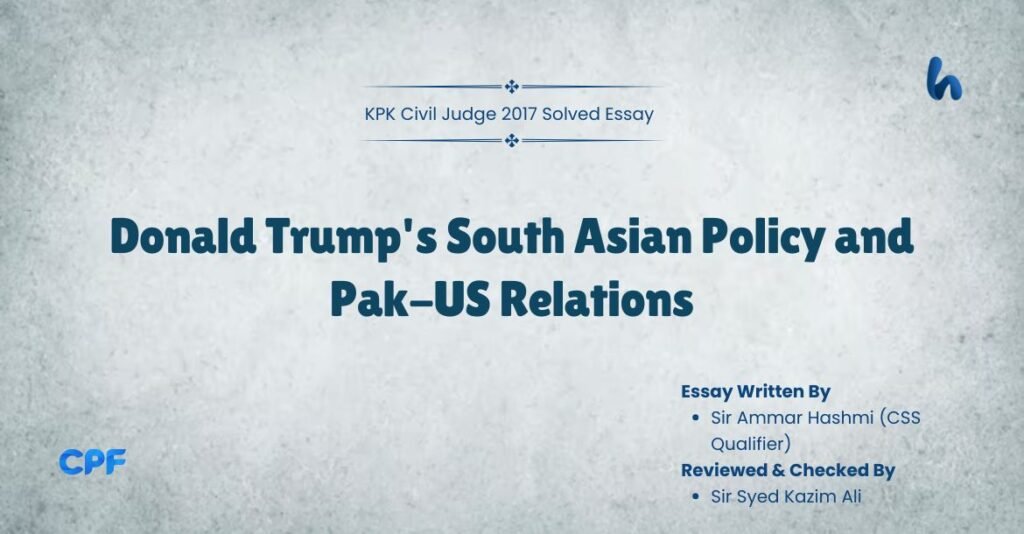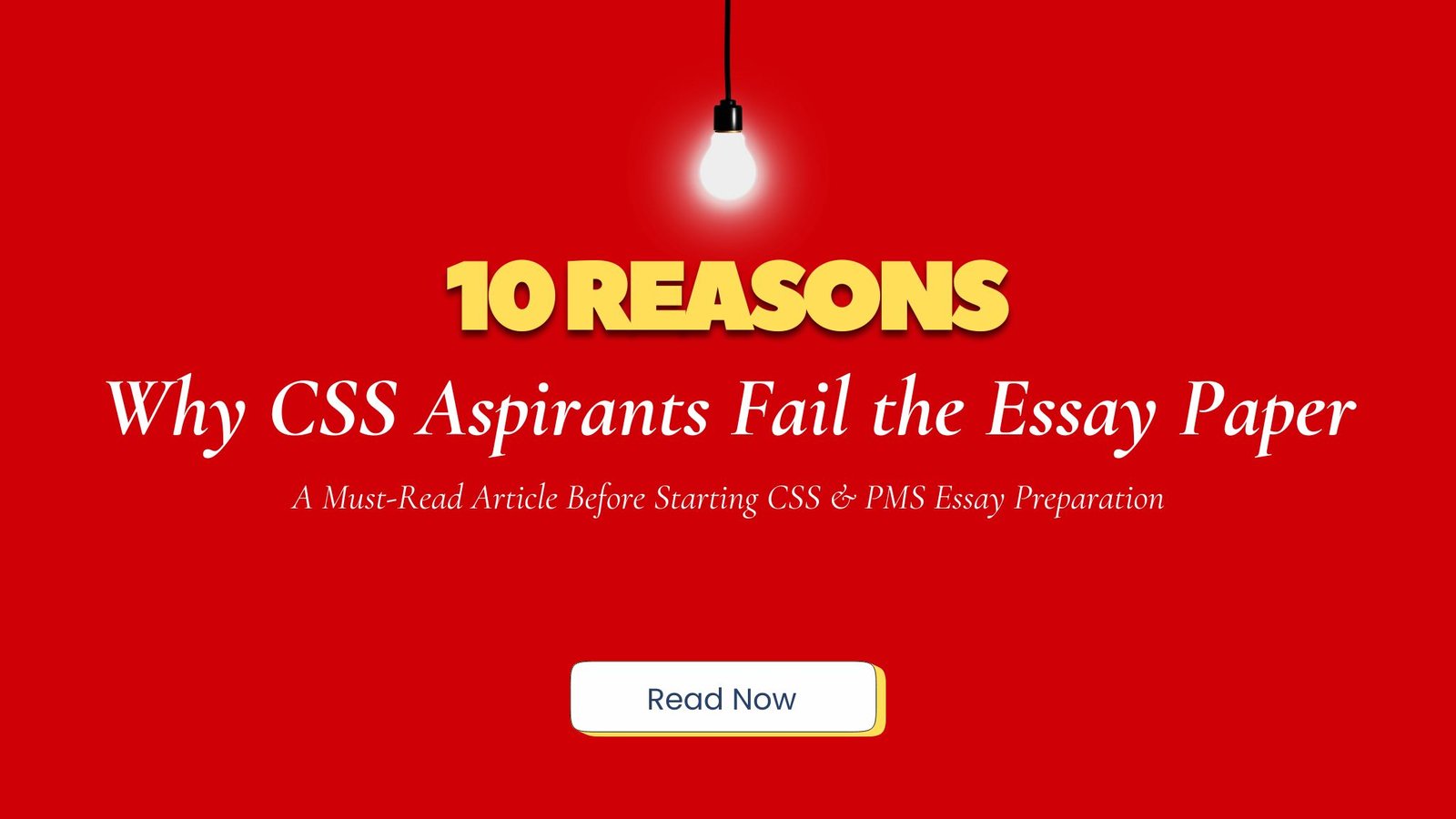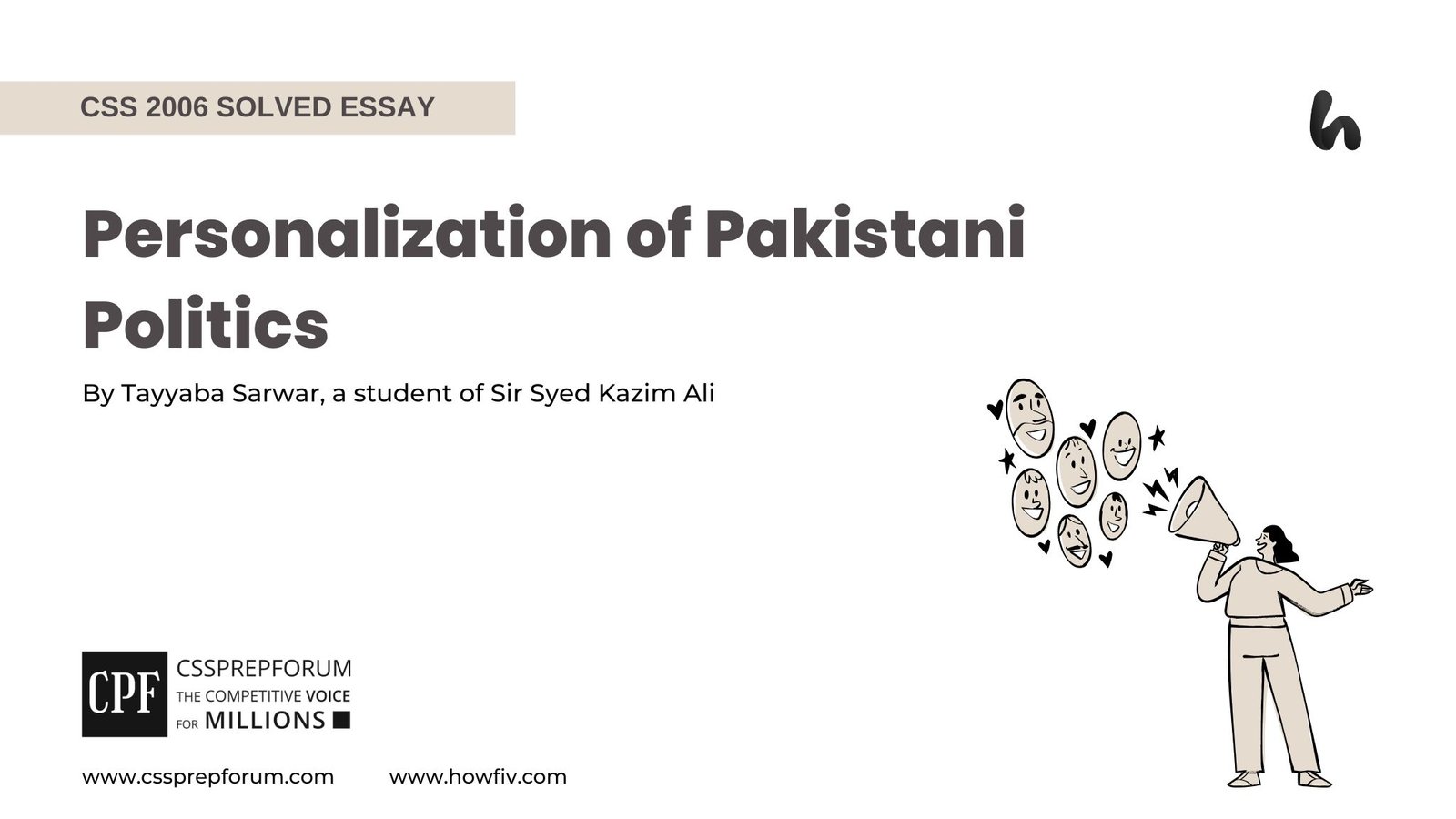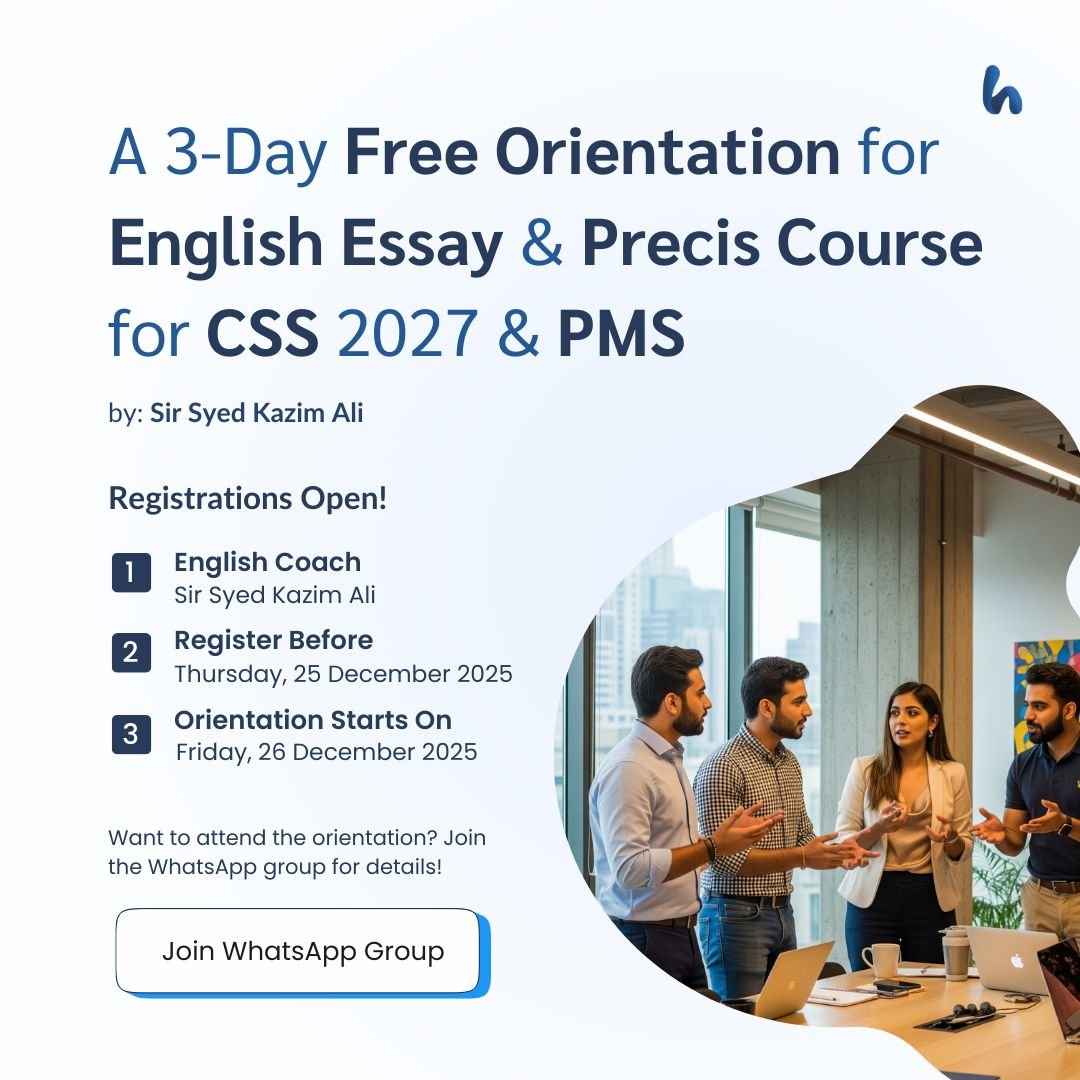Sir Ammar Hashmi, a Sir Syed Kazim Ali student, has attempted the Civil Judge KPK 2017 Five Paragraph Essay “Donald Trump’s South Asian Policy and Pak-US Relations“ on the given pattern, which Sir Syed Kazim Ali teaches his students. Sir Syed Kazim Ali has been Pakistan’s top English writing and CSS, PMS essay and precis coach with the highest success rate of his students. The essay is uploaded to help other judiciary and competitive aspirants learn and practice essay writing techniques and patterns to qualify for the essay paper.

Donald Trump’s South Asian Policy and Pak-US Relations
Outline
1-Introduction
While some argue that despite tensions, Pak-US military and intelligence cooperation continued on a limited scale, Donald Trump’s South Asian policy, marked by a strategic tilt towards India, economic and military pressure on Pakistan, and a transactional approach to diplomacy, significantly weakened Pak-US relations.
2-How did Trump’s South Asian strategy affect Pakistan-US relations?
2.1-Trump’s policy prioritized India as a strategic partner, reducing Pakistan’s role in regional security dynamics.
- Evidence: The 2017 National Security Strategy recognized India as a key ally in countering China while criticizing Pakistan for alleged support of militant groups.
2.2-While Trump’s administration pressured Pakistan through aid cuts and public criticism, it also engaged Pakistan in the Afghan peace process.
- Evidence: In 2019, Trump acknowledged Pakistan’s role in facilitating US-Taliban negotiations, leading to the 2020 Doha Agreement.
3-Did Trump’s policy completely sever ties between Pakistan and the US?
- Counterargument: Some argue that Pak-US military and intelligence cooperation continued on a limited scale despite tensions.
- Refutation: However, trust between both nations deteriorated significantly, with Pakistan shifting towards China and Russia for strategic partnerships.
4-Conclusion
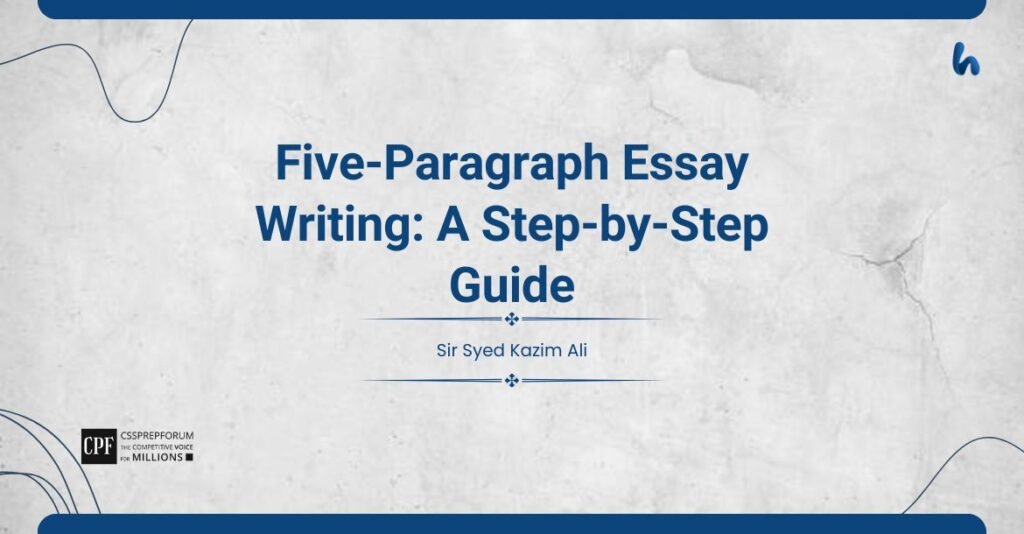
The Essay Begins Below!
“Pakistan has much to gain from partnering with our effort in Afghanistan. It has much to lose by continuing to harbour terrorists.” – Donald Trump (2017). Throughout history, Pakistan and the United States have maintained a complex relationship, balancing cooperation with frequent tensions. Under Trump, this dynamic changed significantly as his South Asian policy prioritized India, applied economic and military pressure on Pakistan, and emphasized a transactional diplomatic approach. While some argue that Pak-US military and intelligence cooperation continued despite tensions, Trump’s policies undermined trust, reduced Pakistan’s strategic significance, and accelerated Islamabad’s pivot towards alternative alliances. His administration’s stance redefined Pak-US ties, weakening their traditional partnership and reshaping regional geopolitical alignments.
Building on this shift in policy, Trump’s administration prioritized India as a key strategic partner, significantly reducing Pakistan’s role in US regional security dynamics. The 2017 National Security Strategy officially recognized India as a crucial ally in countering China while simultaneously criticizing Pakistan for allegedly supporting militant groups. Consequently, the US strengthened defence and economic cooperation with India, signing key military agreements and increasing intelligence sharing. At the same time, Trump’s administration suspended $2 billion in security aid to Pakistan, further straining diplomatic ties. This strategic realignment diminished Pakistan’s influence in US foreign policy and pushed Islamabad to seek alternative partnerships.
In addition to favouring India, Trump’s administration also pressured Pakistan through economic sanctions, military aid cuts, and public criticism while maintaining selective diplomatic engagement. The US imposed financial restrictions and accused Pakistan of harbouring militants, further deteriorating bilateral trust. However, by 2019, Washington recognized Pakistan’s role in facilitating US-Taliban negotiations, leading to the 2020 Doha Agreement. Despite this temporary cooperation, the relationship remained largely transactional, driven by immediate security concerns rather than long-term strategic interests. Ultimately, while Pakistan momentarily regained importance in US foreign policy, Trump’s broader regional strategy weakened traditional Pak-US ties.
Despite these tensions, some argue that Pak-US relations were not entirely severed under Trump. Military and intelligence cooperation continued on a limited scale, particularly in counterterrorism efforts and regional security discussions. The US still relied on Pakistan’s strategic position for logistical support in Afghanistan, and intelligence-sharing mechanisms remained in place. However, this perspective overlooks a crucial shift; trust between the two nations deteriorated significantly, pushing Pakistan to diversify its alliances. Pakistan deepened its economic and military ties with China, mainly through expanding the China-Pakistan Economic Corridor (CPEC) and strengthening its defence cooperation with Russia. While some military coordination remained, Trump’s policies ultimately accelerated Pakistan’s pivot towards alternative strategic partners, weakening traditional Pak-US ties.
In summary, Donald Trump’s South Asian policy, marked by a strategic tilt towards India, economic and military pressure on Pakistan, and a transactional approach to diplomacy, significantly weakened Pak-US relations. While some cooperation persisted, the suspension of military aid, public criticism, and shifting geopolitical priorities pushed Pakistan to seek alternative alliances, particularly with China and Russia. Although Pak-US engagement continued in limited areas, the broader relationship remained strained. Ultimately, Trump’s approach redefined regional dynamics, signalling a long-term shift in Pakistan’s strategic alignments and reducing its traditional reliance on the United States as a key security and economic partner.
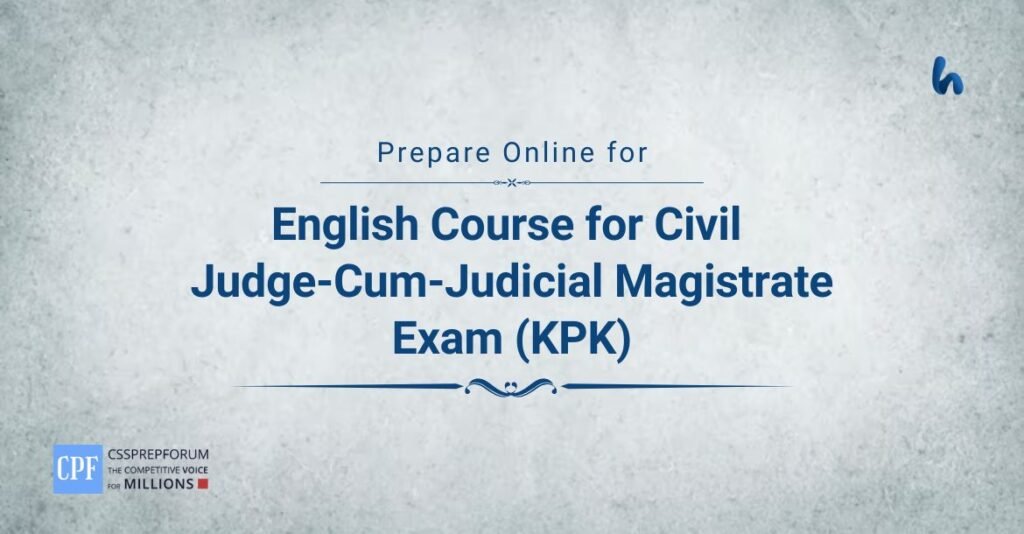
Click on Any to Start Reading
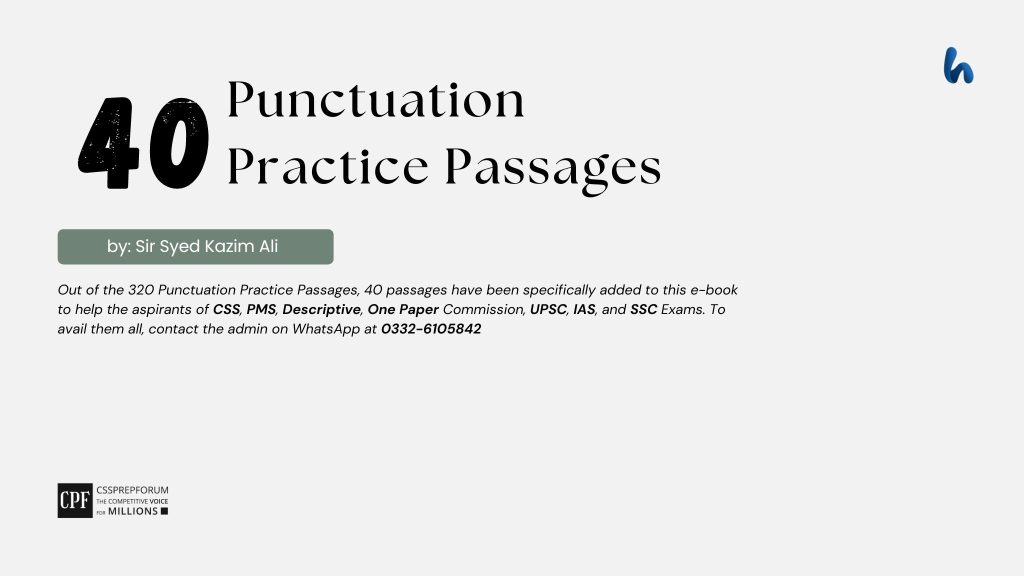
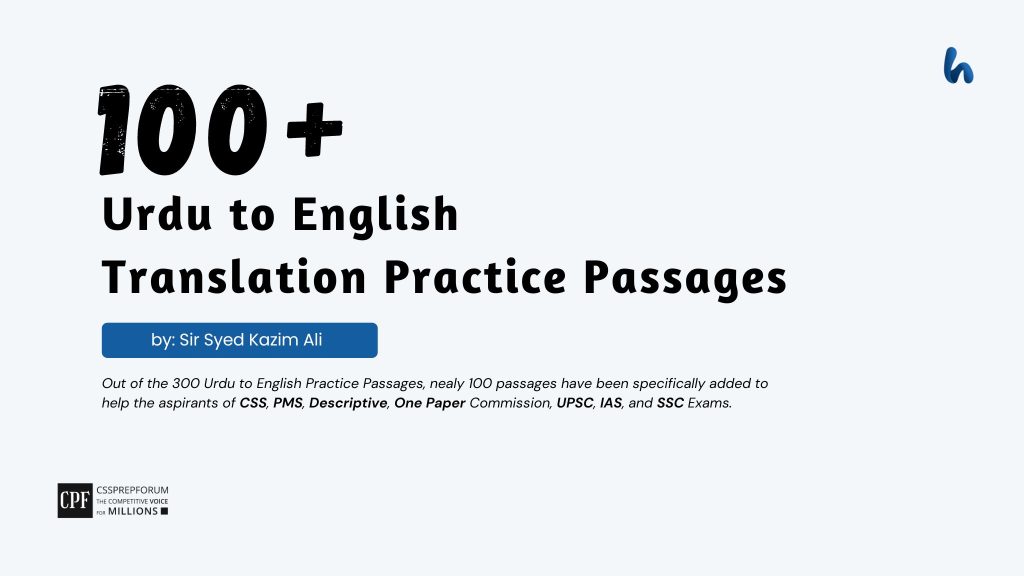
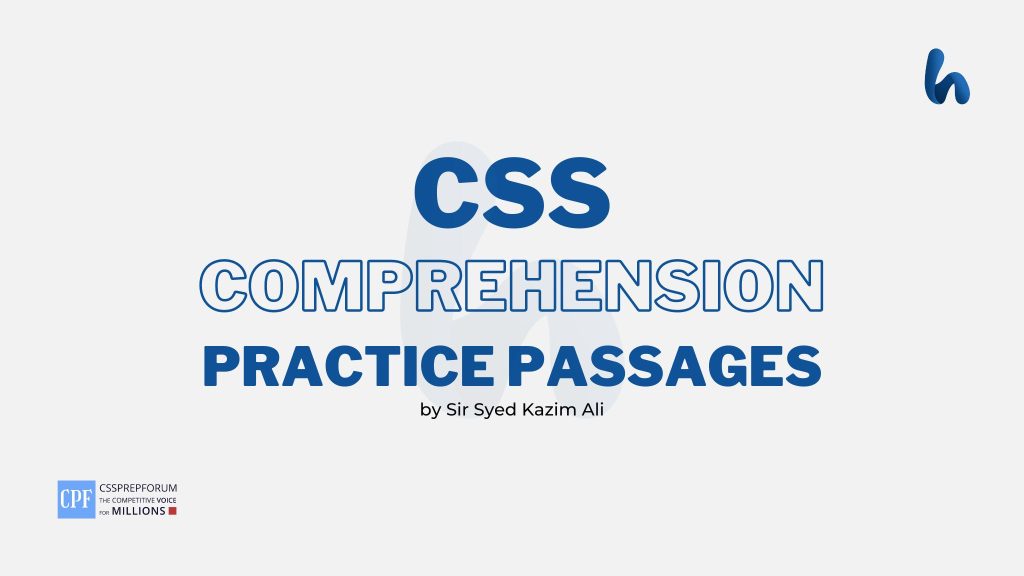
FAQs About Sir Syed Kazim Ali
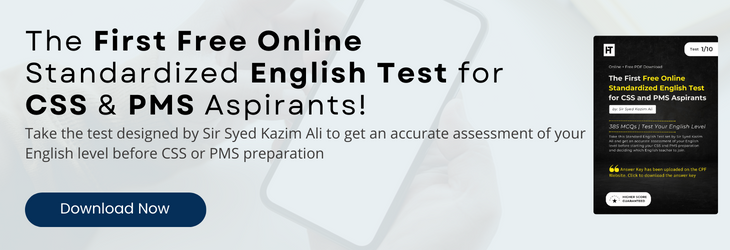
CSS Solved Past Papers’ Essays
Looking for the last ten years of CSS and PMS Solved Essays and want to know how Sir Kazim’s students write and score the highest marks in the essays’ papers? Then, click on the CSS Solved Essays to start reading them.
CSS Solved Essays
CSS Solved General Science & Ability Past Papers
Want to read the last ten years’ General Science & Ability Solved Past Papers to learn how to attempt them and to score high? Let’s click on the link below to read them all freely. All past papers have been solved by Miss Iqra Ali & Dr Nishat Baloch, Pakistan’s top CSS GSA coach having the highest score of their students. General Science & Ability Solved Past Papers

